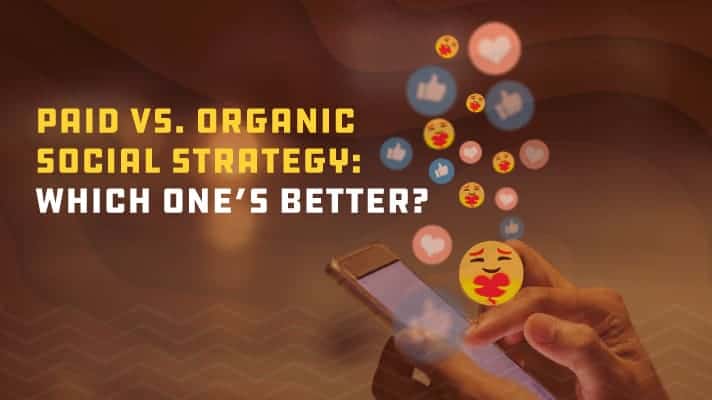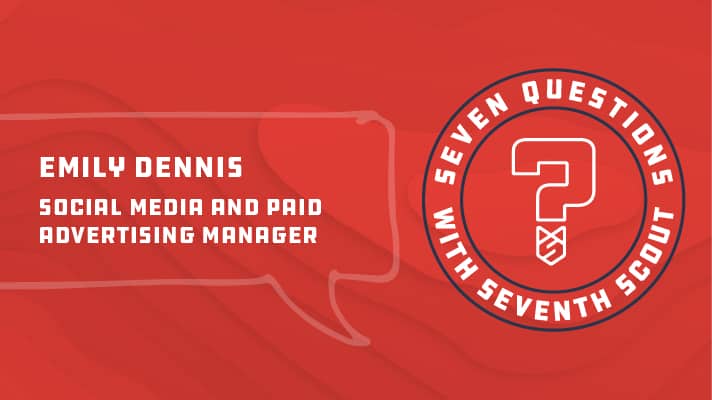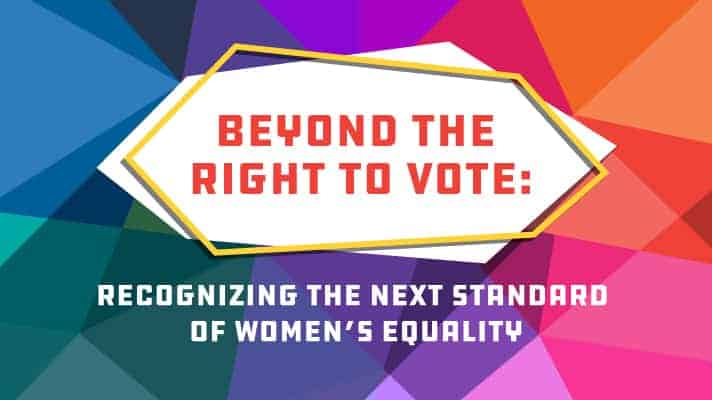Paid and organic social media are different beasts best harnessed for different purposes. They suit varying businesses with different priorities in different situations. So when it comes to choosing a paid or organic social media strategy, which one’s better? Well, if you ask us, that’s a trick question. One approach isn’t better than the other. In fact, they complement each other quite well. It’s more than likely that we’ll suggest a combination of the two.
Ideally, you’ll use paid social media to increase your reach and draw a specific audience to your social media profiles. Once they are on your profile, your organic social media presence will capture their interest, convert them to followers or customers, and then retain them in your online community.
First, let’s start by breaking down the differences between organic and paid social media, as well as some pros and cons and best practices of each.
Organic Social Media
Organic social media refers to free content that users share using free social media tools. This free content includes posts, photos, videos, memes, stories, lives, and more that brands, businesses, and individuals use to establish their personality and voice, build relationships with their audience, and engage with or support their audience.
It may sound pretty simple, and that’s because it is! Organic social media is how you’ve probably been using and posting to social media all along. It’s the foundation of every digital marketing strategy today because it’s the best way to nurture a genuine connection with your audience, especially in a digital sense.
The downside to organic posting is that the number of individuals who see your posts is relatively low. These individuals include your followers (your “organic reach”); your followers’ followers (if your followers interact with your post); and individuals that follow any location tag or hashtag that you use.
Considering that all major platforms use ranking algorithms, the individuals mentioned above combine to be only a small percentage of your followers who see your organic posts. In fact, in a recent report by We Are Social, the average reach of an organic post on Facebook is around 5.20%. That means roughly 1 in 19 followers see a page’s organic content. Ouch!
This number may be a bit discouraging, but it’s important to remember that for paid social media to run, organic social media must walk. Behind every successful paid social strategy is a consistent, creative, and engaging organic social media presence that strengthens the brand identity and audience relationships. But we’ll get to that later…
Benefits of Organic Social Media
- It’s free! Because who doesn’t like free??
- It enables you to build a community of like-minded individuals.
- It allows you to fully embrace community engagement – listening and engaging with your audience, establishing trust and transparency, and managing your reputation.
- It’s your brand’s opportunity to validate themselves and establish a brand identity – customers who are deciding whether or not to do business with you are probably visiting your social pages.
- 58% of people say they visit a brand’s social pages before visiting their website, which is an 81% increase from the previous year.
Best Practices for Posting Organically
- Cut down on the promotions, save the sales talk for your ads. Instead of focusing on getting people to buy or contact, focus on sharing content that resonates with your followers. Tell stories, show the faces behind your brand, be a thought leader within your industry.
- Let your brand personality shine through. Take the opportunity to showcase your business. Highlight the people behind your brand, your company’s values and missions, and your passions as a brand.
- Shape your brand. What do you want your audience to know about your business? Create content that showcases what you do, how you do it, and even what you stand for.
Paid Social Media
Paid social media, also known as paid digital advertising, is when brands or individuals pay Facebook, Instagram, LinkedIn, Twitter, YouTube, Pinterest, TikTok, etc., to share their content with a broader audience. Through paid social media you can define who you’d like to share your posts with by demographics (gender, age, education, income, etc.), location, interests, job, and more – meaning that you can target your ideal customer more precisely.
Many businesses or individuals use paid social media to raise brand awareness and attract a larger audience, promote their newest deal, event, content, etc., drive traffic to their website, generate leads, and drive conversions (such as a purchase).
Simply put, paid social media is the best way for brands to target new audiences and convert them to customers. However, it does require a budget that can vary depending on the platform you’re using, the number of campaigns you’re running, the duration of the campaign, and more. Additionally, these ads don’t run themselves. Running successful paid media campaigns takes prior knowledge of campaign creation and constant monitoring during the duration of the campaign. Paid social media campaigns need to be monitored, analyzed, and consistently adjusted to get the most out of them. They are only as effective as the effort you put into them.
Benefits of Paid Social Media
- Enables brands and individuals to break through the algorithms and connect with audiences that may have been unlikely to discover them otherwise.
- Helps you to target specific users by sorting them in categories like location, age, interests, device usage, and more.
- Allows you to reinforce the values and messaging that you promote on organic social media.
- It’s structured to suit any budget. Paid advertising is generally charged on a pay-per-click basis, meaning you only pay for those that interacted with your paid ad.
Best Practices for Paid Social Media
- Target the right audience. It’s all in the sauce, targeting is what makes paid social media so effective. The right messaging paired with the right audience leads to success! Take time to decide what your ideal audience looks like.
- Keep it short and simple. Share a message that is to the point. You want it to resonate with the audience that you’re targeting, and get the message across quickly. The audience you’re reaching isn’t necessarily actively looking to engage with content from your business, so you have to take advantage of the moment you have.
- Try, fail, try again, succeed. Always test! If at first, it doesn’t work out, try again. Try different messaging, creatives, or calls to action to improve your results.
Implementing Paid & Organic Social Media Strategies
Now that you understand the just of organic and paid social media, how do you implement the two strategies?
Most integrated social media strategies are less about paid vs. organic social. Instead, they have a mixture of organic and paid social media activities. Organic social is used to serve your existing audience, while paid social attracts new eyes.
Your organic social media can aid in making your marketing dollars go further. You can use your organic social media performance to determine which content is most popular with your audience before running it as a campaign – saving you time and money.
Tips for Seamlessly Integrating An Organic and Paid Social Media Strategy
- Don’t feel the need to put advertising dollars behind all promotional posts. Only pay for social ads when they actually help you hit your business goals. Don’t underestimate the power of a creative, original, organic campaign that can generate buzz all on its own. However, if it isn’t getting the reach you’d like, then it might be time to put some ad-spend behind it.
- Organic post performing well? Boost it. Boosting posts is generally considered an entry-level tactic because it’s low risk because you don’t have to come up with an ad or an ad campaign. If you see your followers positively reacting to one of your organic posts, pay a small amount to show it to new audiences that are similar to your current audience.
- Use retargeting features to stay connected with your organic audience. Many platforms have implemented a retargeting feature, allowing you to show your ads to those who have already come to your social profiles or website organically. The idea here is that these individuals may just need a friendly reminder to come back and check out your brand again.
- The data matters. Pay close attention to what the analytics tools are telling you as the data will inform what changes need to be made to get better results. You’ll want to do this on an organic, paid, and comparison level. Look at the data to see your audience’s characteristics, what platforms your audience is using, and what types of content they engage with.
At the end of the day, social media platforms are an ideal channel for communicating with your audiences and giving them a place to feel like they are a part of a community. This sense of belonging, loyalty, and interest can be created through an organic social media strategy and then enhance with a paid social media strategy. Paid vs. organic is an unrealistic choice these days and most successful, modern, digital marketing approaches combine both strategies in a way that makes each one stronger.
At Seventh Scout, our paid digital advertising efforts work hand-in-hand with our organic social media strategy. We help our clients build an organic social media presence that resonates with their audience and use paid social media to promote their brand and capture new audience members that convert. Are you looking to strengthen or implement an integrated social media strategy? Contact us today to get started.





